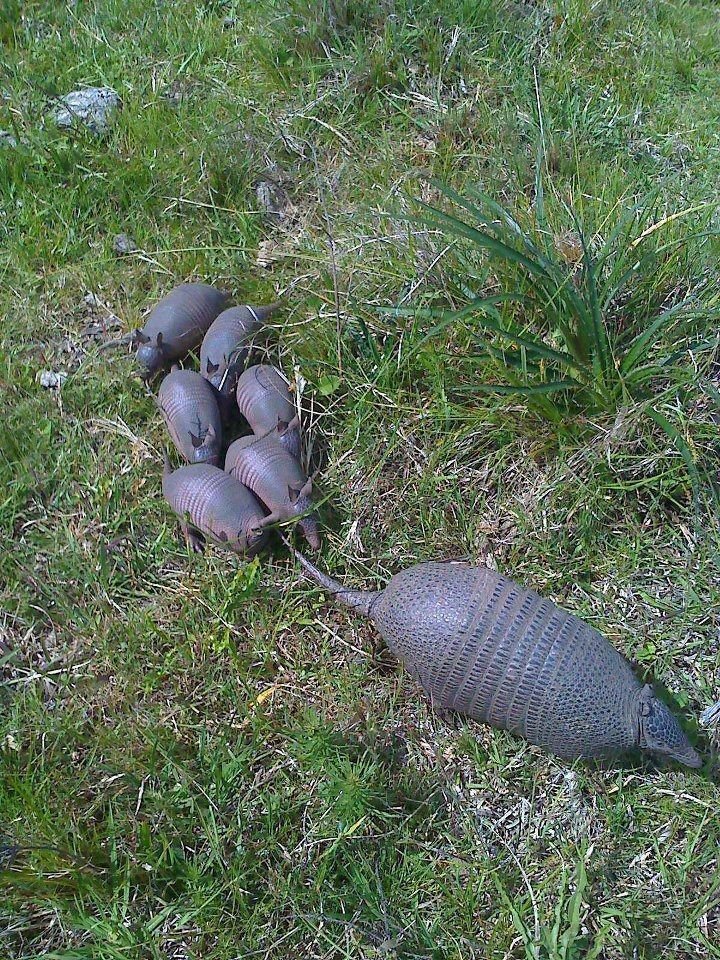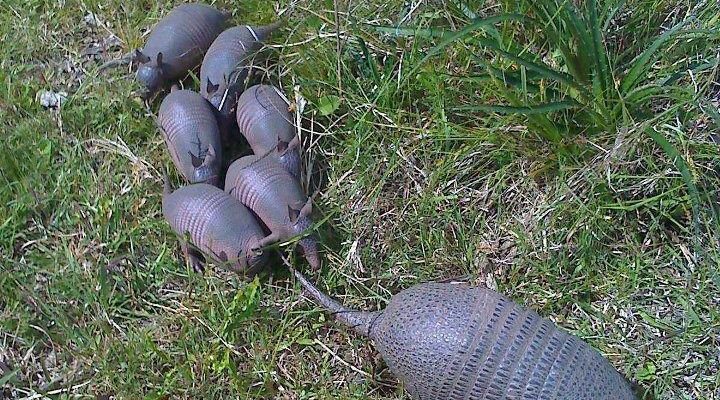
Armadillos are often seen as lone wanderers, but when it comes to parenting, they show a lot of care for their young. They belong to a group of mammals called xenarthrans, which also includes sloths and anteaters. You might be surprised to learn that armadillos are quite skilled at finding just the right spots to build their homes, ensuring their babies are safe and sound. So, grab a comfy seat, and let’s explore the charming world of armadillo parenting!
Understanding Armadillo Reproduction
First things first, let’s talk about how armadillos reproduce. Most commonly, we see the nine-banded armadillo, which has some unique reproductive habits. A female armadillo typically mates during the spring and summer months. After mating, she undergoes a gestation period of about two to four months. It’s during this time that the magic begins!
You might be wondering how many babies an armadillo can have. Well, a single mother can give birth to one to four pups at a time! However, it’s pretty common to see just one or two. When the babies are born, they’re born tiny and helpless, covered in a soft, leathery skin that gradually hardens into that familiar armored shell. Isn’t that fascinating?
The pups are usually born in underground burrows, which provide a safe environment away from predators. These little ones are highly vulnerable during those early days, so the mother armadillo takes her role very seriously. She tends to them closely and ensures they stay protected as they grow.
Burrows: The Perfect Nursery
Speaking of safety, the burrow plays a critical role in raising armadillo young. Just like a cozy nursery for a baby, armadillo burrows are specifically chosen for their location and construction. A mother armadillo digs a burrow deep enough to provide insulation against the heat and cold, while also being hidden from prying eyes.
These burrows can be quite elaborate, often extending several feet underground. The mother will create chambers for rest and feeding, keeping her pups warm and snug. It’s amazing how nature provides everything these little ones need to thrive!
The burrow also acts as a refuge from predators. While adult armadillos have their tough shells for defense, baby armadillos are more vulnerable. As the mother forages for food nearby, she keeps a close ear out for any danger, ensuring her babies are safe until they’re ready to venture out.
Feeding and Nutrition
Now that we have the nursery sorted, let’s dive into what armadillo pups eat. When they first arrive, they rely solely on their mother’s milk for nourishment. Armadillo milk is rich in nutrients, helping the pups grow strong and healthy. As the babies start to get bigger, usually around two to three months old, they begin to explore solid food.
Mothers will introduce their young to insects, worms, and small invertebrates, which make up a good part of an armadillo’s diet. As their little noses explore their surroundings, they learn to dig for food just like their parents. It’s like teaching them how to hunt with a gentle tap on the shoulder, saying, “Here, try this!”
By the time they’re about four months old, they’re mostly weaned and actively foraging on their own. They mimic their mother’s behavior and learn vital survival skills, setting them up for life in the wild.
Independence: The Next Big Step
Once the pups are around six months old, the journey toward independence begins. At this stage, they often start following their mother on her nightly foraging trips, learning how to navigate the world. It’s a bit like going on an adventure together, where each outing is a lesson in survival.
Eventually, the mother begins to let them venture out on their own. They still rely on instinct and their early training, but these young armadillos must now find food and shelter independently. While separation can be tough, it’s a necessary process for them to become self-sufficient.
Interestingly, some pups may choose to stay close to their mother for a while longer, forming small family groups. This support system can be beneficial, especially when it comes to finding food and evading predators.
Common Challenges in Raising Young Armadillos
Despite the loving care armadillos give to their young, raising pups isn’t without challenges. One of the biggest threats is predation. Young armadillos are particularly vulnerable to animals like coyotes, foxes, and even birds of prey. Mother armadillos need to be constantly vigilant to protect their little ones from these dangers.
Another difficulty is finding enough food. During certain seasons, food can be scarce, especially if the environment changes due to droughts or floods. If a mother can’t find enough to eat, it impacts her ability to care for her young, leading to a struggle for survival.
In some cases, if a mother armadillo feels threatened, she might abandon her young temporarily to escape danger. However, she usually returns after things settle down. This instinct to protect is deeply ingrained, showcasing the lengths a mother will go to for her babies.
The Role of the Mother Armadillo
Mother armadillos are nurturing, but they also have an important protective role. They teach their young essential survival skills while maintaining a keen awareness of their surroundings. This blend of nurturing and vigilance is what helps ensure the pups can thrive in the wild.
Interestingly, since armadillos are solitary animals, the chance of encountering a father is quite low. After mating, the male typically moves on, leaving the mother to handle the entirety of parenting. You might think it sounds tough, but nature has equipped these mothers with the instincts and skills they need.
Mother armadillos have fascinating behaviors too. They often use their sense of smell and hearing to keep their young safe, teaching them how to engage these senses for survival. It’s like passing down wisdom through instinct, ensuring the next generation is prepared to face life on their own.
Raising young armadillos in the wild is truly a remarkable journey, filled with challenges and triumphs. From carefully chosen burrows to nurturing diets, every aspect of their upbringing is designed for survival. Watching how a mother armadillo protects and teaches her pups feels like viewing nature’s own masterclass in parenting.
As these adorable young armadillos grow and eventually venture off into the wild, they carry with them the skills and knowledge needed to thrive. It’s a beautiful reminder of the intricate balance of life in nature—a cycle that continues with each generation. So next time you see an armadillo, take a moment to appreciate not just the creature itself but the remarkable journey it undertakes to raise its young.

